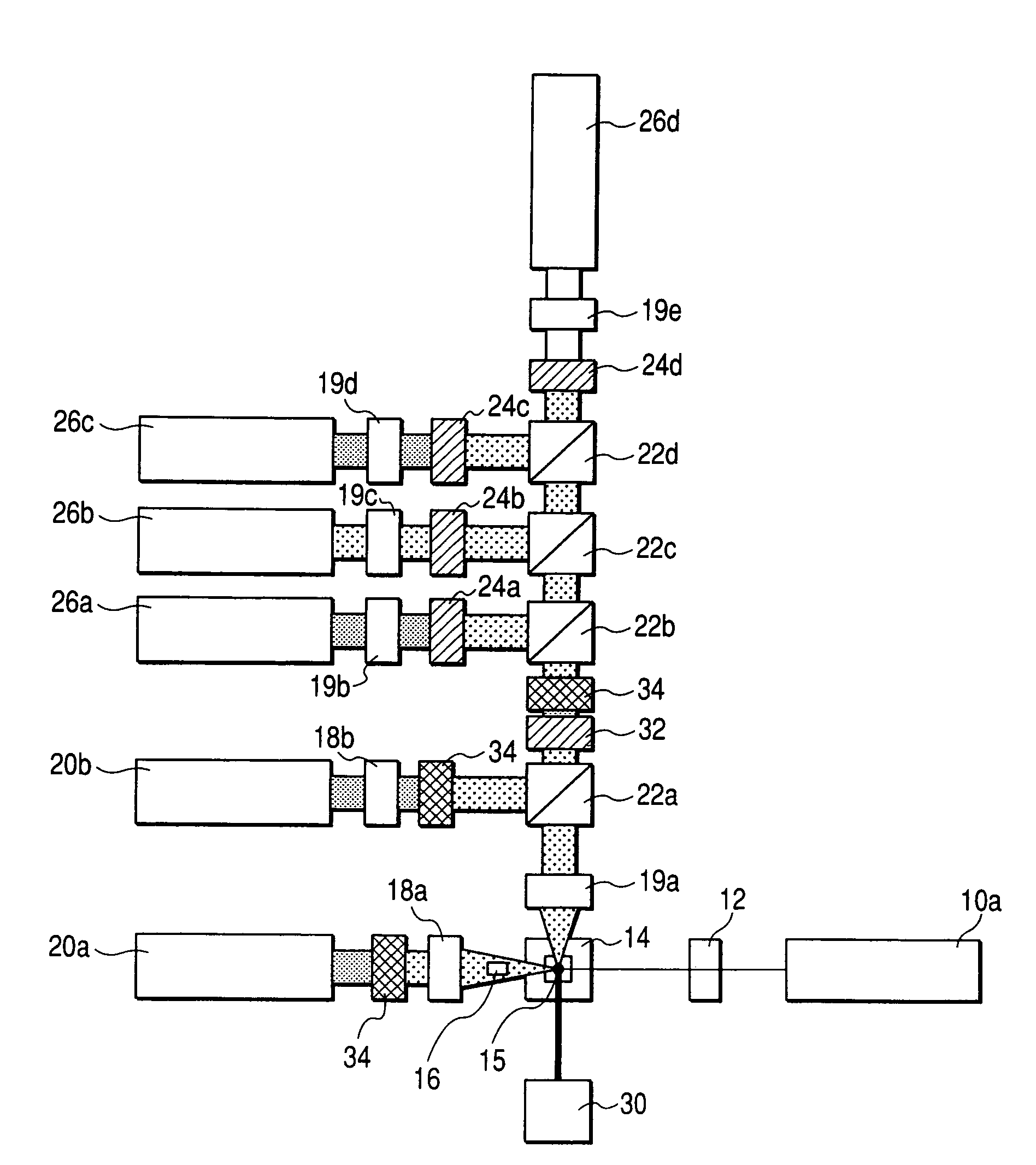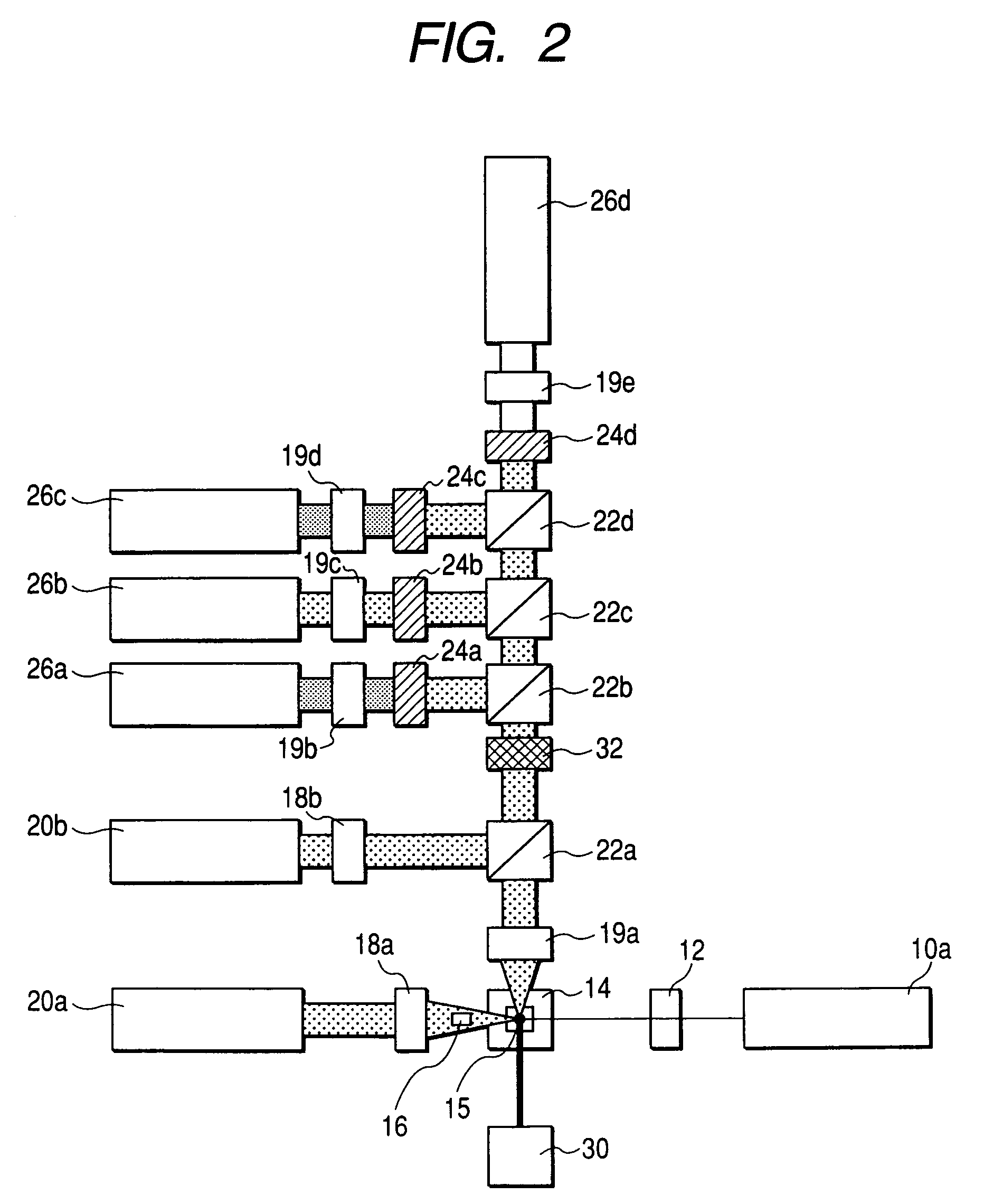Flow cytometer
a flow cytometer and flow cytometer technology, applied in the field of flow cytometers, can solve the problems of large footprint of laser apparatus per se, and large accompanying peripheral devices, and achieve the effect of analyzing the fluorescence of targets more appropriately and efficiently
- Summary
- Abstract
- Description
- Claims
- Application Information
AI Technical Summary
Benefits of technology
Problems solved by technology
Method used
Image
Examples
first embodiment
[0059]FIG. 1 shows a flow cytometer according to the invention. A laser light source 10a serves as a light source for scattered light excitation and irradiates the target particle 15 in the flow cell 14 with a laser beam by way of the beam shaping lens 12. Thus, the laser beam radiated at the target particle 15 excites forward scattered light and orthogonal scattered light respectively. Meanwhile, the flow cytometer is configured such that a laser beam directly incident on the flow cell 14 is blocked by a shade 16 disposed in front of the flow cell 14.
[0060]In this embodiment, as a light source for exciting fluorescence with respect to the target particle, a light-emitting diode (LED) 30 which can emit light in the blue-light region of relatively shorter wavelength is disposed. A light beam emitted from the LED 30 irradiates the target particle 15 in the flow cell 14, thereby exciting fluorescence.
[0061]Forward scattered light thus having been excited by the target particle 15 is co...
third embodiment
[0070]Next, the invention will be described. A composite lens is obtained by integrating a plurality of lens elements having different focal points so as to form a single circular lens (cf., Japanese Patent Publication No. 11-23447A). It is possible to easily enhance sensitivity and S / N ratio in fluorescence detection by disposing such a composite lens on an optical path of scattered light, and appropriately disposing a plurality of fluorescence detectors at focal positions of the respective lens elements constituting the composite lens.
[0071]FIG. 4 shows one example of such a configuration. Components similar to those in the first embodiment will be designated by the same reference numerals and repetitive explanations for those will be omitted. In this embodiment, composite lenses 40, 42a, and 42′ are respectively applied to the forward scattered light detector 20a, the orthogonal scattered light detector 20b, and the fluorescence detectors 26a to 26c. More specifically, the conden...
PUM
| Property | Measurement | Unit |
|---|---|---|
| spectrum width | aaaaa | aaaaa |
| fluorescence | aaaaa | aaaaa |
| wavelength | aaaaa | aaaaa |
Abstract
Description
Claims
Application Information
 Login to View More
Login to View More - R&D
- Intellectual Property
- Life Sciences
- Materials
- Tech Scout
- Unparalleled Data Quality
- Higher Quality Content
- 60% Fewer Hallucinations
Browse by: Latest US Patents, China's latest patents, Technical Efficacy Thesaurus, Application Domain, Technology Topic, Popular Technical Reports.
© 2025 PatSnap. All rights reserved.Legal|Privacy policy|Modern Slavery Act Transparency Statement|Sitemap|About US| Contact US: help@patsnap.com



